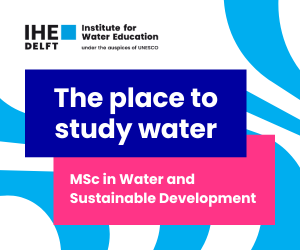Overview
Open Positions
1
Time Span
01 Oct 2026 for 4 years
Application Deadline
01 Oct 2025
Financing
yes
Type of Position
Full PhD
Working Language
English
Required Degree
Master
Areas of study
Bioinformatics, Environmental Science, Sustainability Sciences (Ecological), Environmental Engineering, Environmental Protection Technology
Description
Description
Microplastics are ubiquitous in the environment due to their versatility and the large quantities in which they are produced and used. At the same time, global consumption and industrial production continue to rise – not only of plastics but also of synthetic chemicals. As a result, the number and amount of so-called micropollutants in the environment are steadily increasing. Among these micropollutants, per- and polyfluoroalkyl substances (PFAS) are of particular concern. Like microplastics, PFAS are highly persistent, mobile, and widely distributed, even in remote areas. Both substance groups pose significant challenges for environmental and human health protection. Microplastic contamination is increasingly being detected on agricultural land. Sources include the direct application of plastic films used for crop production, as well as inputs from sewage sludge and compost, which are commonly applied as soil conditioners and fertilizers.
In addition to the plastics themselves, these inputs often carry other micropollutants such as pesticide and fertilizer residues, as well as PFAS. This study focuses on agricultural fields near Rastatt. The “Rastatt case” is one of the largest known PFAS contaminated areas in Germany (≈1200 ha) originating from the application of sludges from the paper industry (Bierbaum et al.).
Microplastics are known to act as carriers for various micropollutants (Yu et al.), as many substances can adsorb to their surfaces, leading to localized concentration hotspots. However, many questions remain—particularly concerning the adsorption of PFAS to microplastics and the conditions under which desorption may occur. Little is known about how environmental ageing and transport affect the sorption behavior of plastic particles. In arable soils, key knowledge gaps include: How does the adsorption of pollutants change with plastic weathering? To what extent do desorption and leaching occur? What transport processes govern the mobility of microplastics and their associated pollutants in the soil?
References:
- Vockenberg,T., Wichard, T., Ueberschaar, N., Franke M., Stelter, M., Braeutigam, P., The sorption behaviour of amine micropollutants on polyethylene microplastics – impact of aging and interactions with green seaweed, Environ. Sci.: Processes Impacts, 2020, 22, 1678–1687.
- Yu, Y., Yin Mo, W., Luukkonen, T., Adsorption behaviour and interaction of organic micropollutants with nano and microplastics – A review, Science of The Total Environment, 2021, 797,149140.
- Bierbaum, T., Klaas, N., Braun, J., Nürenberg, G., Lange, F.T., Haslauer, C, Immobilization of per- and polyfluoroalkyl substances (PFAS): Comparison of leaching behavior by three different leaching tests., Science of the Total Environment, 2023, 876, doi: 10.1016/j.scitotenv.2023.162588
Required Documents
Required Documents
- CV
- Certificates
- Transcripts
- References
- Motivation letter
- Language certificate
